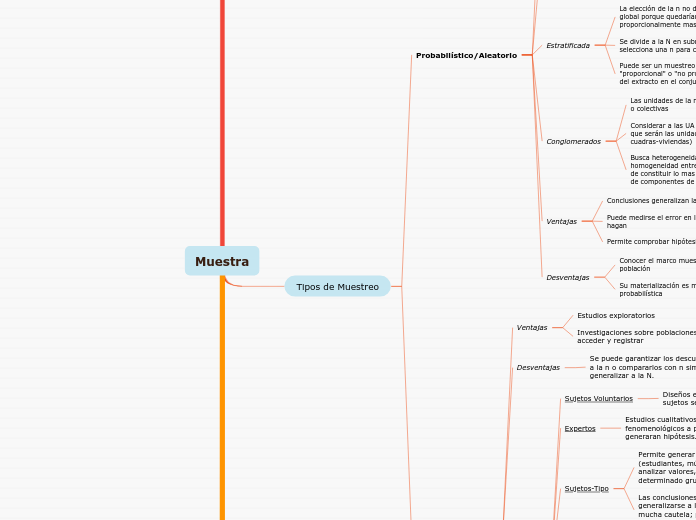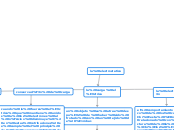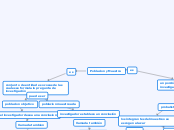Muestra
To name your story, you have to think about the overall message and what you want your audience to understand from the story. Also, make it relevant and easy to remember.
Representativa
Tradición Cualitativa
La selección se apoya en la inducción. Se priorizan casos típicos, divergentes, heterogéneos, que reflejen un amplio rango de situaciones y que son valiosos en tanto poseen información relevante a los fines de la investigación.
En casos significativos, cuando se presentan atributos y particularidades propias a partir de los cuales emergen diferentes cualitativas.
Tradición Cuantitativa
Cuando es una parte proporcional de la población
Reproduce las características de la población
Concepto
Subgrupo o subconjunto representativo de la población, cuyas características debe reproducir un pequeño lo mas exactamente posible. "Parte de un conjunto mayor seleccionada especialmente para extraer conclusiones"
Variables de Estratificación
Optima
Proporcional
Tipos de Muestreo
The middle of the story is where you add layers of complications that will lead to the end. Reveal more about the character's journey. Did their personality go through changes? How did they overcome the challenges? And as you build up the story’s central conflict, make it more personal to that character. Also, from the middle act, you have to lead into the final act.
No Probabilístico
Your character(s) need(s) motivation in order to solve the challenge(s).
Tipos
Secondary characters also might have motivs beacuse of which they may cross path with main character or which might trigger them to help the main character.
Teórico
Proceso de recolección de datos para generar una teoría por el cual conjuntamente se selecciona, codifica y analiza información y decide que info escoger luego y donde encontrarla para desarrollar teoría tal como surge
Rutas Aleatorias
Sus rutas se eligen aleatoriamente sobre un mapa de un municipio por ejemplo donde se harán las entrevistas.
Estratégico
La selección de las unidades muestrales responde a criterios subjetivos acordes con los objetivos de la investigación
Bola de Nieve
Las unidades muestrales van escogiéndose sucesivamente a partir de referencias aportadas por personas a las que se ha accedido. La n va aumentando hasta que el investigador decide cortar la selección
Cuotas
Muy usadas en estudios de opinión o mercadotecnia
Dividir a la N en cuotas a partir de variables sociodemográficas de acuerdo a los objetivos.
Sujetos-Tipo
Las conclusiones difícilmente pueden generalizarse a la N. Solo puede hacerse con mucha cautela; pueden generalizarse a la n en si y a las muestras similares.
Permite generar grupos típicos de personas (estudiantes, músicos, consumidores) para analizar valores, significados, conductas, en determinado grupo social.
Expertos
Estudios cualitativos y exploratorios: estudios fenomenológicos a partir de los cuales se generaran hipótesis.
Sujetos Voluntarios
Diseños experimentales donde se busca que los sujetos sean homogéneos en ciertas variables.
Secondary characters might also have motives that lead them to cross paths with the main character or which might trigger them to help the main character.
Se puede garantizar los descubrimientos de base a la n o compararlos con n similares, pero no generalizar a la N.
Why does your character need to confront this challenge? What does he/she expect to accomplish by solving it?
See a few examples:
- will marry in 3 days
- can fix the mistakes of the past
Investigaciones sobre poblaciones difíciles de acceder y registrar
Estudios exploratorios
Probabilístico/Aleatorio
Each story has a main character and that character usually needs to solve a problem or challenge. The character's challenge is the one that creates tension throughout the story.
Desventajas
Su materialización es mas compleja y cara que la no probabilística
Conocer el marco muestral con los elementos de la población
Ventajas
Permite comprobar hipótesis
Puede medirse el error en las predicciones que se hagan
Conclusiones generalizan la población
Conglomerados
Busca heterogeneidad dentro del racimo y la homogeneidad entre ellos, dado de que cada racimo de constituir lo mas ajustada posible de la variedad de componentes de la N
Considerar a las UA encapsuladas en lugares físicos, que serán las unidades muestrales(pais-municipio-cuadras-viviendas)
Las unidades de la n no son simples sino compuestas o colectivas
Estratificada
Puede ser un muestreo aleatorio estratificado "proporcional" o "no proporcional" al peso relativo del extracto en el conjunto de la N
Se divide a la N en submuestras para casa extracto y selecciona una n para cada uno de ellos
La elección de la n no debe hacerse de manera global porque quedarían algunos extractos proporcionalmente mas o menos representados
Sistemática
El resto de los elementos de la n se obtienen sumando sucesivamente el coeficiente de elevación a partir del 1° elegido y hasta completar el tamaño de la n°
Solo la 1° Unidad de la n se elige a la azar, siempre que el n° seleccionado sea inferior al coeficiente de elevación
Debe calcularse el "coeficiente de elevación" (N/n) que expresa el n° de veces que la n esta contenida en la N
Simple
In most stories, there are 3 challenges. The number 3 is a mystical number symbolizing completeness. Try to come up with interesting challenges with which your character needs to struggle.
See a few examples below:
- turns into a werewolf at night
- is sent back in time
Consiste en sacar por medio de un sorteo rigurosa una serie de unidades de una N (población) hasta completar el tamaño de la n (muestra)
A cada unidad de población se le asigna un numero identificatorio en orden consecutivo
Su realización exige la existencia de un marco muestral
Población
In the beginning of the story (or the exposition), you will need to introduce the setting and characters. You might also want to introduce the main conflict. This part of the story is important because it gives the reader necessary background information and maybe even a first insight into a character’s personality.
Supresión
Actualización
The setting (time & place) of a story can change throughout the plot.
Sensory detail
Sensory details include sight, sound, touch, smell, and taste. These details are important because they create depth in your setting.
See a few examples below:
- the smell of fresh bread
- the scent of freshly cut grass
- rain falling onto the windshield etc.
Sensory details
Weather
The weather is an important element in your story because it can highly influence the ambiance and the mood of the characters.
Do these weather conditions affect the main character?
The most affected character is the main character. Write down here if he/she is affected by these weather conditions in any way. For example, if they lost a family member or their home during a hurricane, etc.
Elements of nature
Decide if you want to include an element of nature in your story. For example, a rainbow can be a very nice choice for a happy ending. The mist in a story can represent mystery and secrets. A thunder can appear in the background at the moment when the 'bad guy' of the story makes its appearance, etc.
Catastrophic event
Does your story include catastrophic weather? See a few suggestions below or add your own:
- hurricane, earthquake, storm, etc
Time
The time of the story can also change. It can describe the event of a single day or can include an entire year's plot. Anyway, don't forget to mention it.
Time of plot
Where does the story takes place?
Your story can take place wherever your imagination will take you to.
For example: in an elevator, in an enchanted forest, etc. Don't forget to give details of the environment each time the setting changes, otherwise, the story can be confusing. Also, mention the seasons as each of them has unique weather and events.
Location
Definición
El conjunto de todos los casos que concuerdan con una serie de especificaciones. "Conjunto de unidades de análisis para las que se desea obtener cierta información"
Comprehensividad
Characters are essential to a good story. Usually, the protagonist(s) is/are the most affected by the plot. Introduce a character by focusing on their actions, interests, and occupation, as the physical appearance doesn't make a difference in most cases.
Character's name
Type in the name of your character.
Other
Add other qualities/attributes of the character.
Main Goal
What is your character's main goal?
fight Evilfind lovedefeat his/her enemyrule the worldmake friendstime travelmake an awesome discoveryOther
Character traits
Which traits best describe the character's personality? Choose more if necessary:
introvertedloyalkindindependentquick-thinkingadventuresomeidealisticsweet-naturedcalmrisk-takercreativewittystrictfussyweirdclumsyharshaggressivecarelessclingingcowardlycrueldeceitfulimpulsiveOther
Type of character
Choose the type of your chacter:
Protagonist (main character)Antagonist (main character's opponent)Flat (stereotypical character)Round (his/ her personality develops throughout the story)Static (doesn't evolve as a person throughout the story)Dynamic (dramatical change in personality)Confidant (the main character trusts him/ her)Foil (contrasting character who enhances the personality of another character)Other










